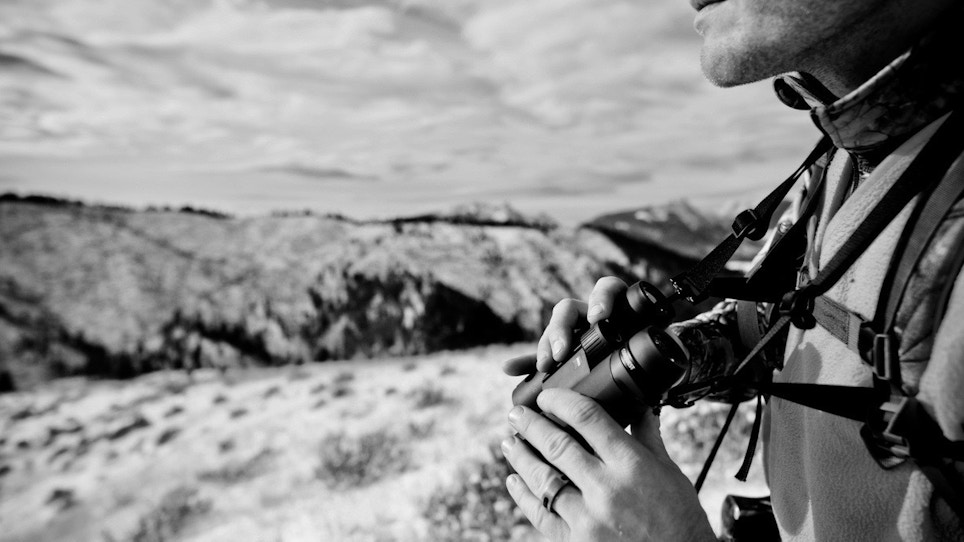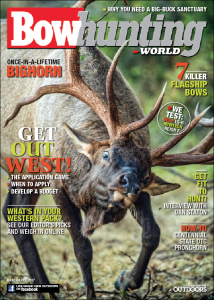Yahtzee! After years of applying, the dice came up 7, you filled the inside straight, the head cheerleader said, “Yes!” when you asked her to the prom. That high-demand, limited-entry public-land elk, deer or pronghorn tag is finally in your mailbox. But drawing a tag is just the beginning. Now what?
It’s time for a reality check. Hunting magazines and cable TV shows make it seem like now that you have the tag all you have to do is show up and, bam! Just like that you’re posing with some ridiculous trophy. This is highly misleading.
I learned this the hard way. In 2008, I had 10 points in Utah for elk, and finally drew a highly coveted archery tag that cost me more than 800 bucks. I even had the help of a local outfitter chosen through the tag application service through which I drew my tag. And yet, after 12 days of dawn-to-dark hunting, I left totally disgusted. I never saw or heard a big bull. Dream hunt? It was more like a nightmare.
Here’s the Truth
The competition to draw a top-quality, high-demand Western hunting permit on public land has never been greater. There are businesses built around the process to draw and then use the tag. Thus, it is crucial to implement a plan and conduct your due diligence if you hope to be successful. You must do all the research and do your own pre-scouting, or hire a qualified, experienced guide/outfitter to do the work for you. Failure to do either or both of these will result in almost certain failure.
Related: Playing The Western State Tag Application Game
Even if you opt to hire an outfitter, you must make sure they both know and have successfully hunted that specific hunting unit, know what class of trophies they have previously harvested for their clients in that unit and be aware of what you should expect to harvest given your goals, shooting skills and physical condition. It is also imperative that the outfitter and his guide(s) are available to pre-scout everything and do everything for you so that you make the most of your hunting opportunity. The importance of this cannot be overemphasized. A lack of pre-scouting by guides and outfitters has crushed my own chances on two occasions in the last five years.
Also, never forget that public-land hunts require you to be in the best physical condition possible and to give it as much time as possible given your own personal situation. Never forget that the entire hunt may come down to one less-than-ideal shot opportunity. You must practice long and hard so that when opportunities arise you’re able to slip an arrow through the crack. Maximizing your chances requires dedication, time and a quality hunt game plan.
Here’s another related note on hunting trophy bucks and bulls out west these days: In the last decade, trying to harvest a true Boone & Crockett-class mule deer buck (one scoring 190-plus gross inches) has become the rage with a rapidly growing group of highly dedicated hunters. What that means is that in units throughout the region known for producing a buck or three of this size, the odds of drawing limited-entry muley tags will be less than five percent. Meanwhile, there will be scads more 190-plus bucks killed in lesser-publicized areas of the West than there are taken in these high-demand units. The serious muley hunter will of course apply in the “dream” units, but he will also do his homework and apply in lesser-known units with much better draw odds where 170- to 180-inch bucks are annually taken. If you draw here, do your homework and take enough time, odds are you’ll find a dandy buck, and it just may be the one buck in the unit that has lived long enough to grow eye-popping antlers.
A Good Example
The previous-mentioned example happened to me with the Arizona elk tag I drew back in 2012. Tired of applying only for preference points or for a hunt where it realistically takes 10-plus points to draw, I applied for a unit where the draw odds were much better. It was known for having lots of elk and some solid, if not spectacular, bulls. When I drew, I did the scouting, talked to friends who had experience hunting the area (including an outfitter buddy), came up with a solid game plan and, on the evening of Day 4, killed an old bull at 27 steps that grossed 361 inches.
Sadly, for the working man, limited-entry, high-demand public-land hunting tags are the way of the future in the West. Serious nonresident hunters stay abreast of the changing nature of these tags and learn to make the system work for — not against — them. You must play the point game, then once you draw be prepared to give it everything you’ve got. The one thing you can be assured of is that the days of waltzing unprepared into National Forest or BLM lands out west and shooting a whopper buck or bull are pretty much over.
I’d love to hear your stories about tags you’ve drawn and the resulting adventures, regardless of the outcome. Email me at brobb@grandviewmedia.com and lay your stories and pics on me!
Featured image: John Hafner







